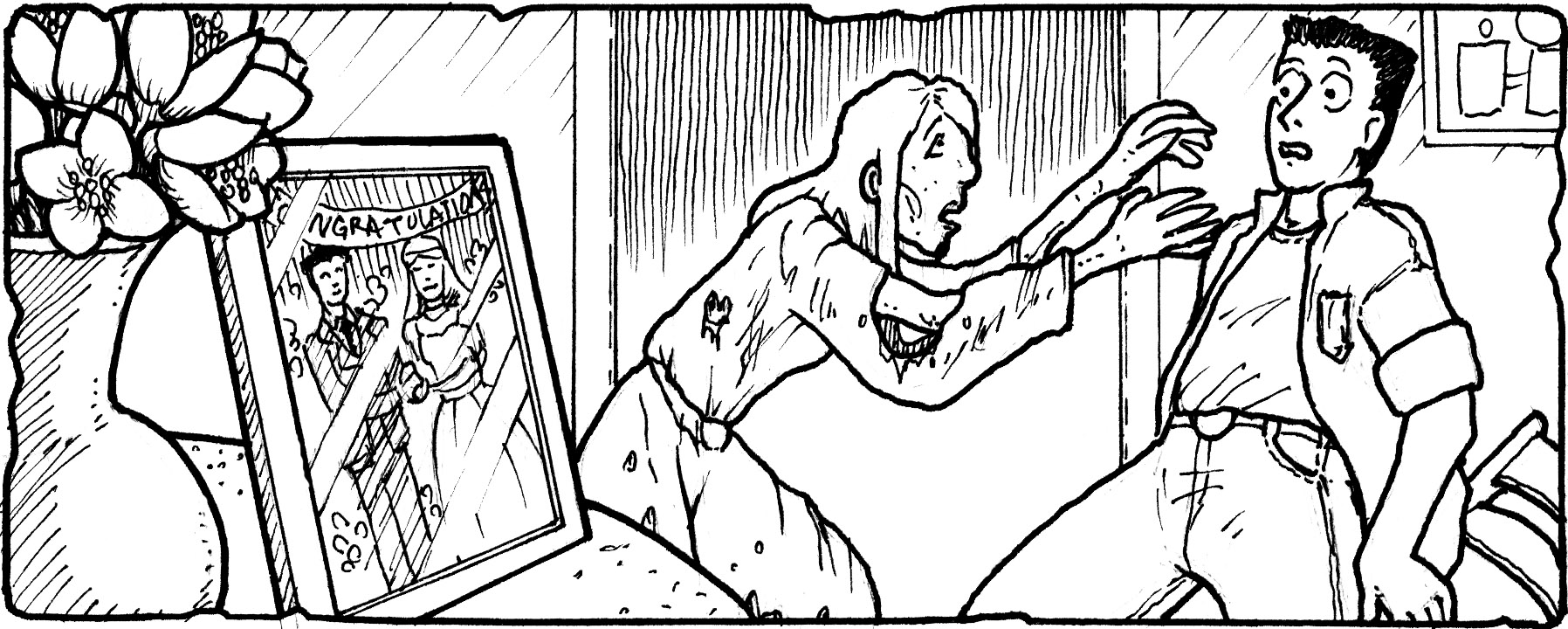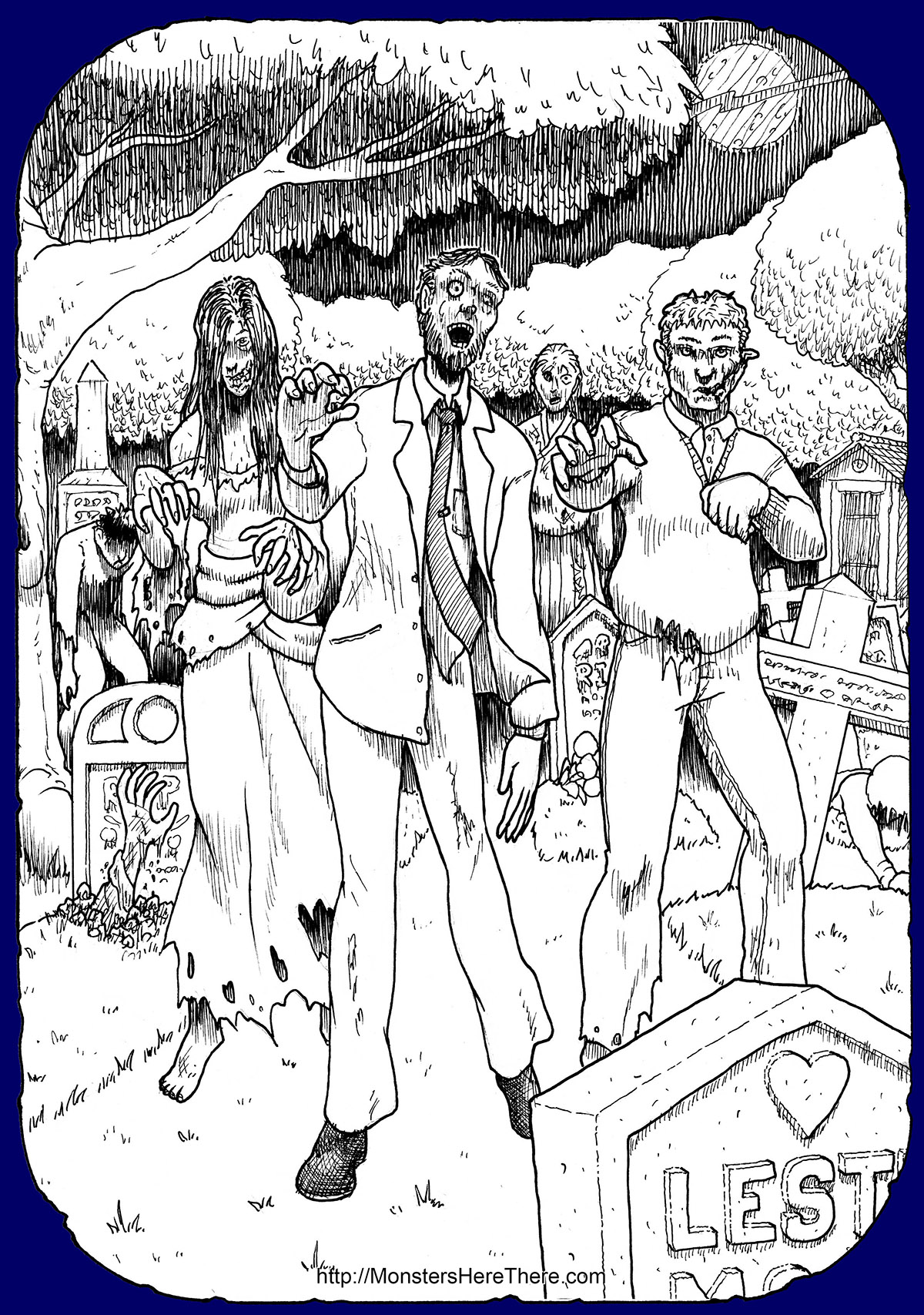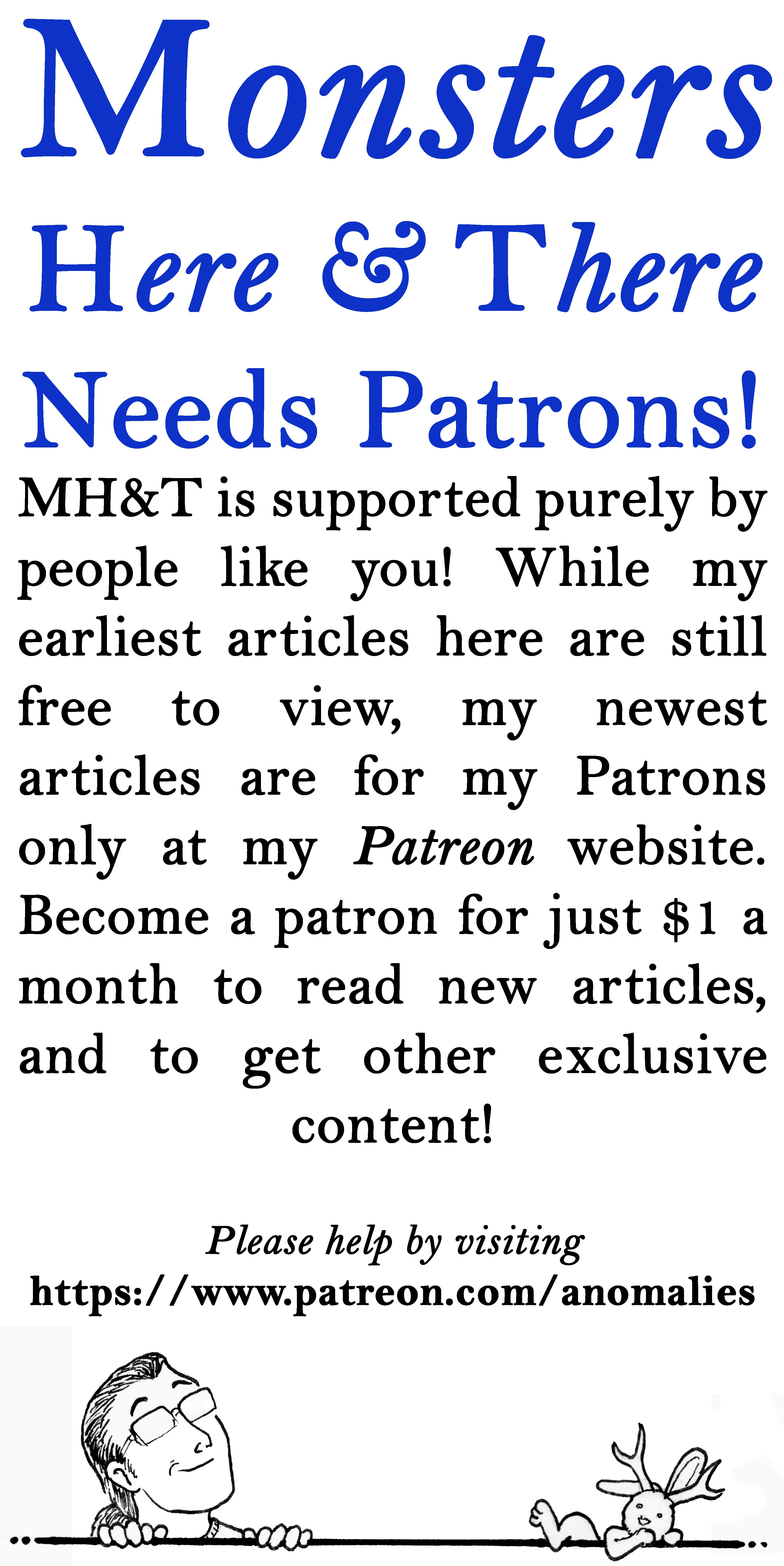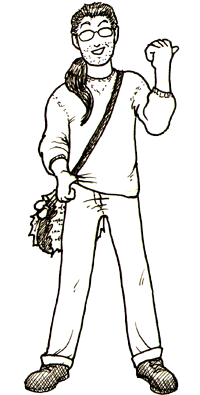| Area(s) Reported: Worldwide & North America: United States: Hollywood
Date(s) Reported: 1968 to Present
Modern ideas of zombies as flesh-eating humans risen from death all initially stem from just one movie: George A. Romero's 1968 film Night of the Living Dead. Strange though it may sound, these modern zombies are not zombies... they are a new monster that has adopted an old monster's name. The earliest zombies were told of in the island country of Haiti, where people who were supposed to be dead would sometimes be found working as mindless slaves to magical masters. These Haitian zombies had no motivation of their own, only working, moving, or eating as their masters told them to. In 1929 William Seabrook's book The Magic Island, which told of his travels in Haiti and specifically about his encounter with some of these slave zombies, spread the idea of this supernatural monster to the Americas and Europe... and pretty soon Hollywood adapted the idea for movies, creating the first zombie horror film White Zombie in 1932. White Zombie and the zombie movies that came after it presented the idea of the zombie as being either a person raised from the dead or a living person under a mystic or hypnotic spell; in both cases, the 'zombie' had to obey orders giving by a supernatural master... but interest in zombie movies, and monster movies in general, sort of faded over time, and fewer and fewer were made. In 1968 George A. Romero's horror movie, Night of the Living Dead, created a whole new "zombie" monster and started what would grow into a worldwide craze for new zombie movies, books, shows, and games. In the movie some unknown force -- possibly radiation from a satellite, but it's never specified -- has caused the corpses of the recently dead to come back to a semblance of life. These walking corpses start to target living people, eating those that they catch. The story follows a small group of people trapped in a farmhouse trying to defend against a hoard of these walking corpses, as the news on TV and radio makes clear the problem is worldwide, and the only two known ways to kill these creatures a second time is to either destroy their heads or burn their bodies. As people were killed, they also rose up to become this new menace unless enough of their bodies had been eaten or destroyed. The film soon gathered a cult following. The success of Night of the Living Dead and its sequels led to many imitators, cementing this new monster as a fan favorite. In the 1968 movie, these new monsters are not called "zombies" at any time. Rather, the new monster was labeled a 'zombie' after they became popular because both this new monster and the zombies of Haiti were dead people who had been brought back to a limited form of life... and so the new monster took on the name of an old monster. But this new type of zombie is depicted as far more aggressive than the Haitian zombies, because they are both independent in how they act and they have a need to eat living tissue to survive. And, as the sequels of Night of the Living Dead expanded on the lore of these new zombies, the monster took on one trait that had already become standard for certain other movie monsters. In the 1968 film, there is a young girl who is bitten by one of the walking dead at the start of the saga and who later dies herself only to resurrect as one of the monsters. In this first film, it's not specified that the monster's bite is what killed her... but in the sequels, it becomes an established point that if one of the walking dead bites you, this bite itself will cause you to die and become one of them, much like a movie vampire's bite or a movie werewolf's bite causes you to become one of those monsters.
The appearance of this new zombie evolved as well. Within the 1968 movie these zombies initially just look like normal people making weird faces, with pale skin and shambling; but, as the movie progresses, more and more of the zombies that appear are visibly wounded, some horrifically... but the creatures that were once people no longer feel pain nor do they mind the wounds. They simply continue to use all the strength they have to try and capture living prey. As the sequels for Night of the Living Dead came out in the years afterwards, the zombies' wounds were depicted as more and more severe: missing limbs, guts hanging out, broken bones, none of it stopped a zombie. The only wound that ever mattered was one either that destroyed their brain or separated their heads from their bodies. The new zombies were also apparently immune to fatigue, never stopping to rest; so, though slow, they would eventually wear down any victim they followed. More importantly, as the zombies wandered they formed into large packs as many began chasing the same victims, the zombies never fighting one another or arguing... each zombie simply following the instinct to catch and eat any living thing they could. Humans that encountered zombies in all of the movies were eventually surrounded by great crowds of the monsters, far more than they could ever possible destroy if they tried. Escape was the only option; finding a place the zombies could not reach was the only chance to live. The last danger that the new zombies presented was that of false hope. As stated, new zombies often just look like pale skinned people acting oddly; so if a person saw someone they knew and/or cared about who they did not know had died and become a zombie, there was a distinct danger that the victim would deliver itself to the zombie without realizing the danger. Zombies have no memory of their former human existence; friends and family of a zombie are just very convenient meals! The Zombie Apocalypse Since the 1968 release of Night of the Living Dead, sequels and imitators of the movie have built upon the original premises to present a nightmare world in which normal society has failed due to the overwhelming presence of the zombies. In this vision, the zombies are an ever present danger that has prevented the routines of life and support; electrical plants cannot be safely maintained, grocery stores no longer receive shipments and wouldn’t be safe to acquire food at, and cars are useless because gas and gas stations are no longer supplied. People survive by being tough, banding together, and searching for safe places that the zombies can’t reach them. In these so-called “zombie apocalypse” stories, often the zombies are only a background part of the tales... the real problems arise from the survivors and how they treat each other and other bands of survivors. Battles within the groups of survivors to determine who’s leader, as well as distrust of other groups while coveting the supplies and resources they’ve gathered, create the real threats; for these are the problems that expose weaknesses in humans that could make them drop their guard against the ever present hoards of zombies. The only real hope of survival in these movies seems to be the possibility that the zombies themselves will eventually have to die off, so to speak; since they don’t eat each other, and they are running out of living beings they can easily pick off, the hoards should eventually starve or rot, and disappear. Though this all sounds dire, some newer movies and stories have started to offer another possible solution to a zombie apocalypse situation... a cure. If becoming a zombie is caused by some sort of transmittable disease, as implied by being bitten to become one, then it also implies there may be a way to cure the disease. In this view, zombies never truly died; they just had a change of behavior and memory caused by a disease... which is a basically different idea from the original Night of the Living Dead film, and which takes some of the edge off of the horror of what a zombie is. Scenes of zombies eating humans -- essentially cannibalism -- is shocking; and being surrounded by an endless enemy that cannot be defeated, only avoided, is disheartening... but zombies present a greater horror yet. Having to kill a loved one to protect yourself, and always wondering if it could have been avoided; doubting your own decisions while desperately trying to protect people that you have to constantly watch and suspect of possibly turning to attack you... or worse still, losing all that makes you feel human as you yourself become the threat that will kill, and eat, those you hold most dear. 
| |










